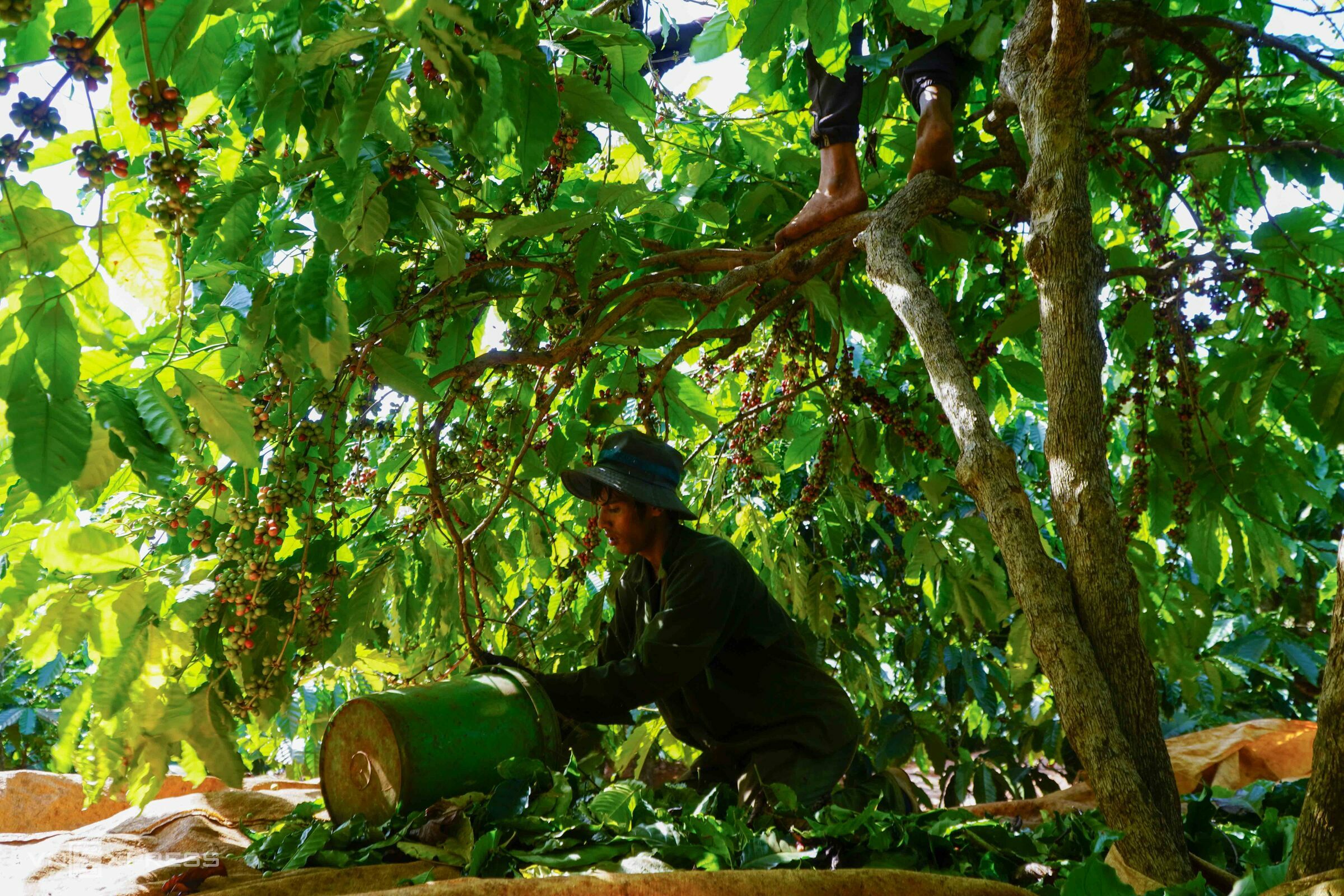According to the Ministry of Agriculture and Rural Development (MARD), Vietnam's coffee exports reached 5.5 billion USD in the first half of 2025, a significant increase from 2.7 billion USD during the same period last year and surpassing the 5.4 billion USD achieved in all of 2024. This is the first time the coffee industry has reached this level in the first half of a year, effectively achieving the entire year’s target ahead of schedule.
Domestic coffee prices have fluctuated significantly. On 30/6, the price of raw coffee beans in the Central Highlands decreased to 94,500 VND per kg, the lowest level since the beginning of the year. Previously, the price had peaked at 135,400 VND per kg in March.
 |
Late coffee harvest in Gia Lai. Photo: Duc Hoa |
On the London exchange, the price of Robusta coffee for July delivery decreased by 30.9% to 3,661 USD per ton; the September contract fell by 31.6% to 3,593 USD per ton. This represents the steepest decline in over a year.
However, export turnover increased sharply thanks to large orders from key markets like the US, EU, Japan, South Korea, and China. The MARD attributes this success to the promotion of processed coffee, specialty coffee, and instant coffee exports – segments with high added value.
The main coffee harvest season occurs from December to April of the following year. Therefore, the supply in the first half of the year mainly comes from existing stockpiles and reserves. This demonstrates that Vietnamese businesses proactively planned production and market access early on.
With this momentum, the Ministry forecasts that coffee export turnover could reach 7.5 billion USD by the end of 2025, an increase of nearly 37% compared to 2024. This is the highest growth rate ever recorded, amidst a volatile international market.
The US market remains the largest destination for Vietnam's processed coffee, especially instant and specialty coffee. However, the Ministry also warns that some US partners are seeking alternative sources, requiring domestic businesses to enhance their competitiveness.
Meanwhile, Northeast Asia, including Japan, China, and South Korea, is emerging as a strong consumer market for Vietnamese Robusta coffee. Additionally, new markets such as the Philippines and Thailand are also considered potential areas for export expansion in the near future.
Nguyen Nam Hai, Chairman of the Vietnam Coffee-Cocoa Association (VICOFA), stated that the recent sharp drop in coffee prices is not due to domestic factors, but mainly due to a large harvest in Brazil and high inventories in Indonesia. Additionally, the rising USD has led international speculators to take profits, putting further pressure on the global coffee market.
"The amount of coffee held by farmers is not much, but prices continue to plummet, making farmers hesitant to sell due to fear of losses," Hai said. He also warned that if prices continue to decline, the next crop year could be affected as farmers reduce investment, impacting productivity and quality.
To maintain growth, the MARD recommends that the coffee industry continue to shift towards deeper processing, expand export markets, and proactively respond to global economic fluctuations.
Thi Ha












